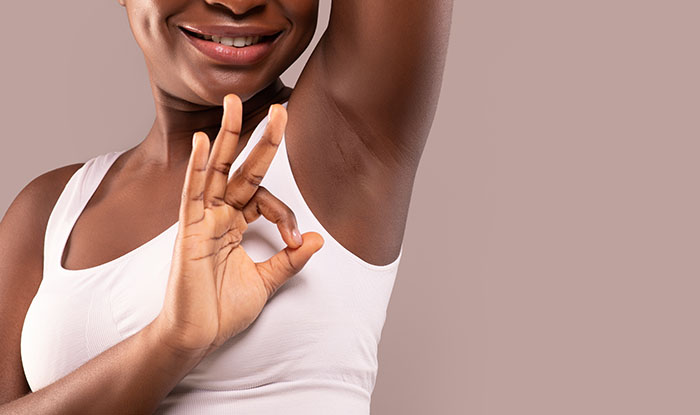


Hyperhidrosis is a medical condition characterised by abnormal, excessive sweating that is not necessarily related to heat or exercise. Those with hyperhidrosis may sweat so much that it soaks through their clothes or drips off their hands, causing significant discomfort and, often, social anxiety or embarrassment.
While the condition can affect any part of the body, it most commonly impacts the palms, feet, underarms, and face. Beyond physical discomfort, hyperhidrosis can also interfere with daily activities, making it a critical issue that demands effective management solutions.

Our comprehensive treatment approach for hyperhidrosis includes various options to address excessive sweating and improve patients' quality of life. These include topical treatments, oral medications, and iontophoresis—a technique that uses a medical device to pass a mild electrical current through water and the skin's surface. Additionally, we offer more advanced procedures, such as anti-wrinkle injections and laser therapy.
Each treatment plan is meticulously designed with the utmost care and precision, ensuring the best possible outcomes. We incorporate anti-wrinkle injections to target sweat glands and significantly reduce sweat production. This method is particularly effective for managing symptoms and enhancing our patient's overall comfort and well-being.


Aftercare following hyperhidrosis treatment is crucial for healing and achieving the best results. Patients are advised to follow specific guidelines depending on the treatment received.
Common aftercare instructions include avoiding direct sunlight and heat exposure, keeping the treated area clean and dry, and avoiding any irritating substances or activities that may disrupt it. Regular follow-up appointments are also essential to monitor progress and adjust the treatment plan as needed.

The number of treatments required to see significant results from hyperhidrosis therapy varies based on the treatment type and the individual's condition.
For some treatments, like injections, patients may notice an improvement in their symptoms within a few days, with results lasting several months. However, periodic treatments are necessary for ongoing relief. Other methods, such as iontophoresis, may require regular sessions over a period to maintain dryness.
